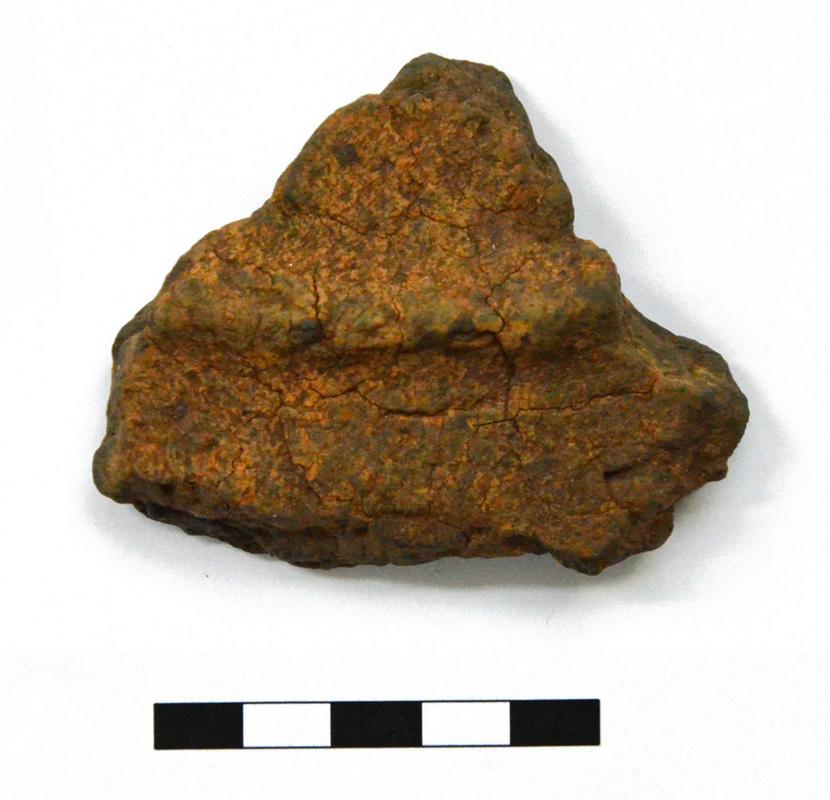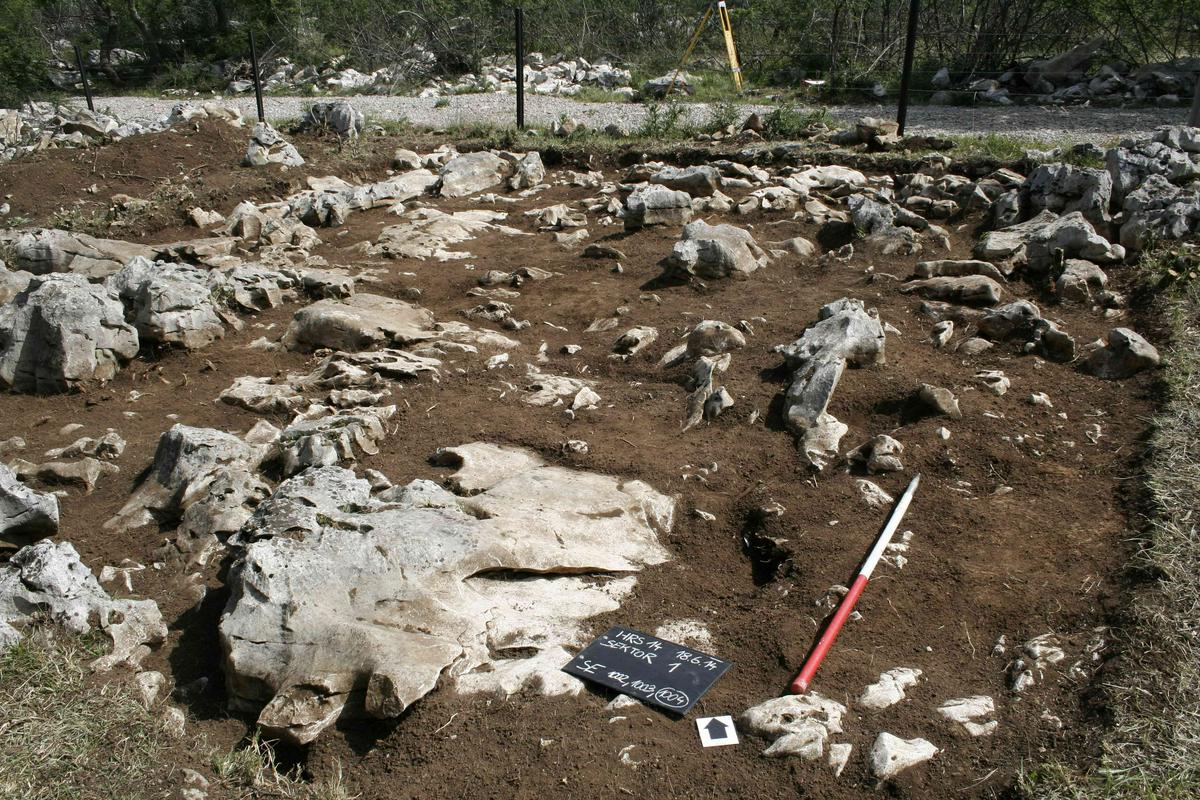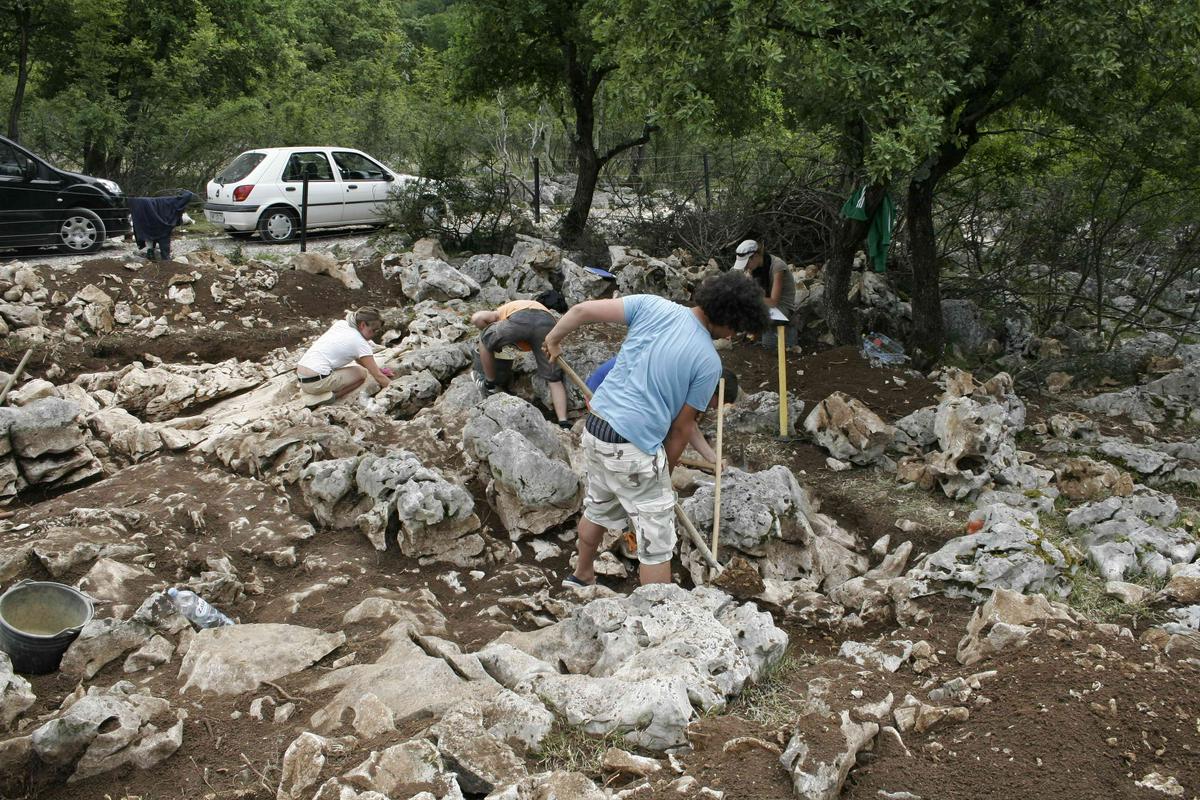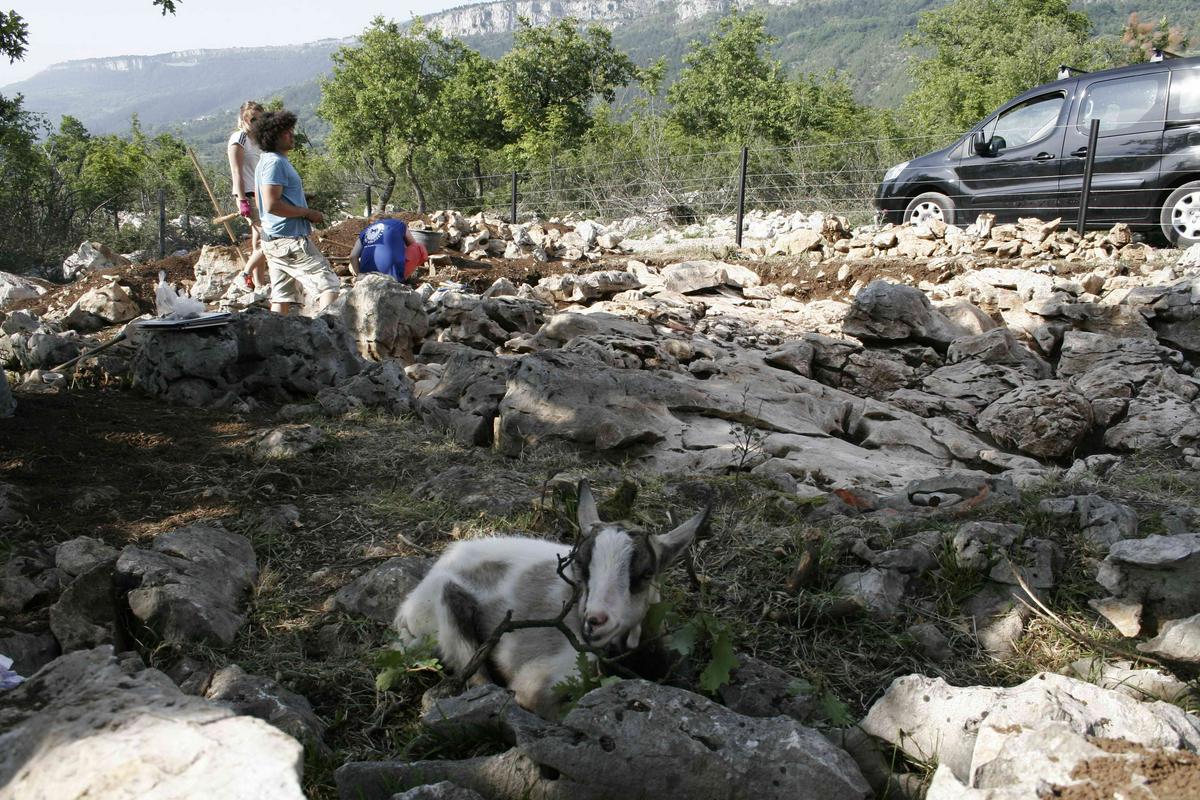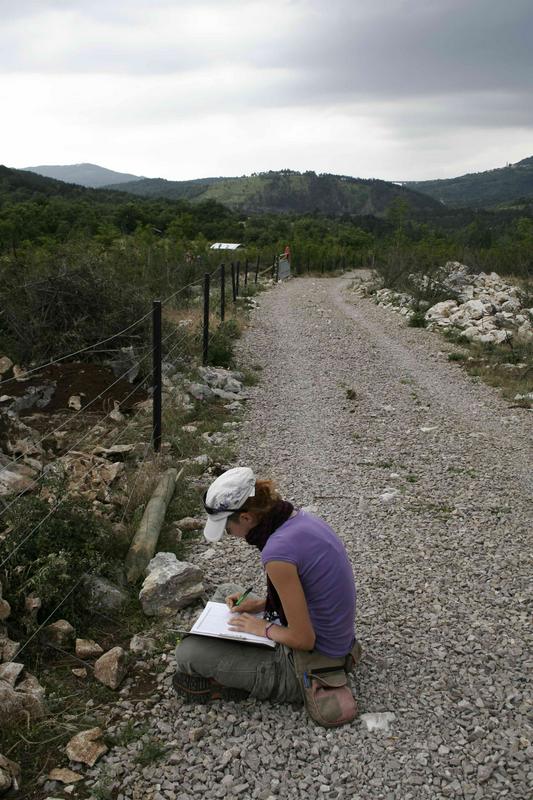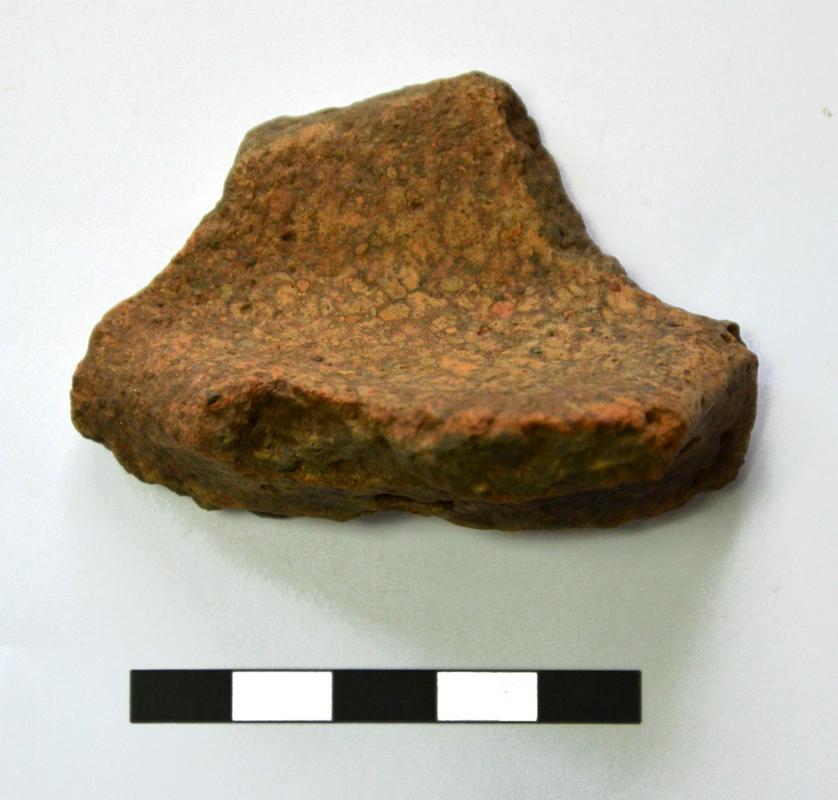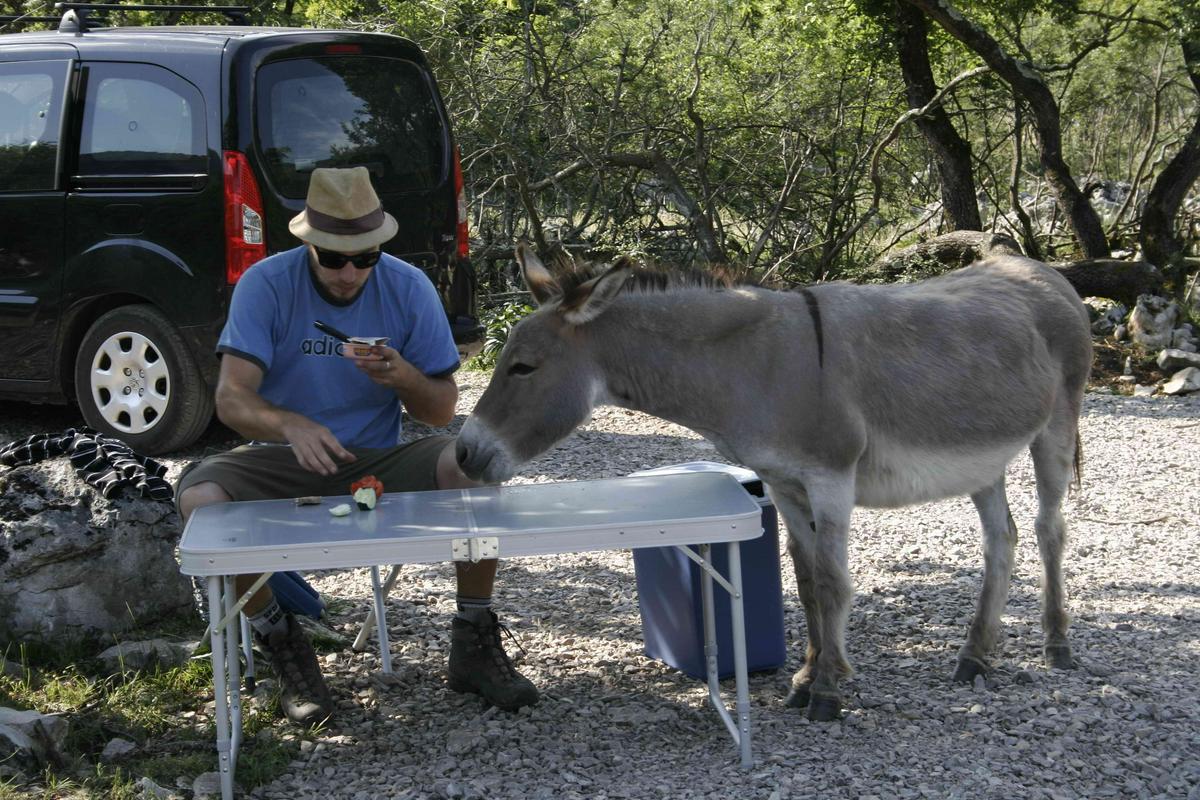
The fragments have been dated between 1800 and 1200 BC, and they prove that the prehistoric men used clay plaster for their dwellings.
"The archeologic research of the area planned for construction of the park for autochthonous animals in Hrastovlje discovered traces of human activity from different eras. The oldest, and the most intensive, are the remains of prehistoric settlement concentrated at the south east part of the research area. The results of the testing excavations show that by the last excavation we have discovered the north east edge of a prehistoric settlement area," wrote the archaeologists from the Stik Group, which during several past months performed the research on the hill between the village of Hrastovlje and the source of the Rižana river.
The head of the excavation, archaeologist Samo Hvalec, told us that the area had already been recorded as a potential archaeological find, but until today it was not clear into which period the presence of man at the mentioned location could be placed. "These finds allowed us to define the time frame much more precisely. It is obvious now that humans had walked and lived here more than 3,000 years ago."
The excavations have covered approximately 120 square metres. The ground is typical for the Karst, limy, but surrounded by flysch in the wider area. The excavation was necessary as shelters for grazing animals will be built on that spot. The area of approximately six hectares has already been dedicated to the park for autochthonous animals. "We were quite surprised by the find. We knew it was a protected area, but we never imagined anything interesting could be found here, among the rocks and shrubbery," said Orjana Trček, the animal caretaker, and a member of the Boškarin Society, which manages the park.
Hvalec believes that the found objects most likely represent a smaller part of remains from that time. "You should know that the excavation took place on an extremely small surface, and at that at the central part of the prehistoric 'kaštelir' (fortified borough). The most interesting finds can be usually found at the edge of such settlements, which means that further research would most certainly bring new surprises."
The archaeologists have finished their work in Hrastovlje, at least for the moment. During the coming weeks the workers will build special shelters and thus provide roof for the animals.
Edi Mavsar, TV Koper; Foto: Gregor Babič
Translated by G. K.




















































